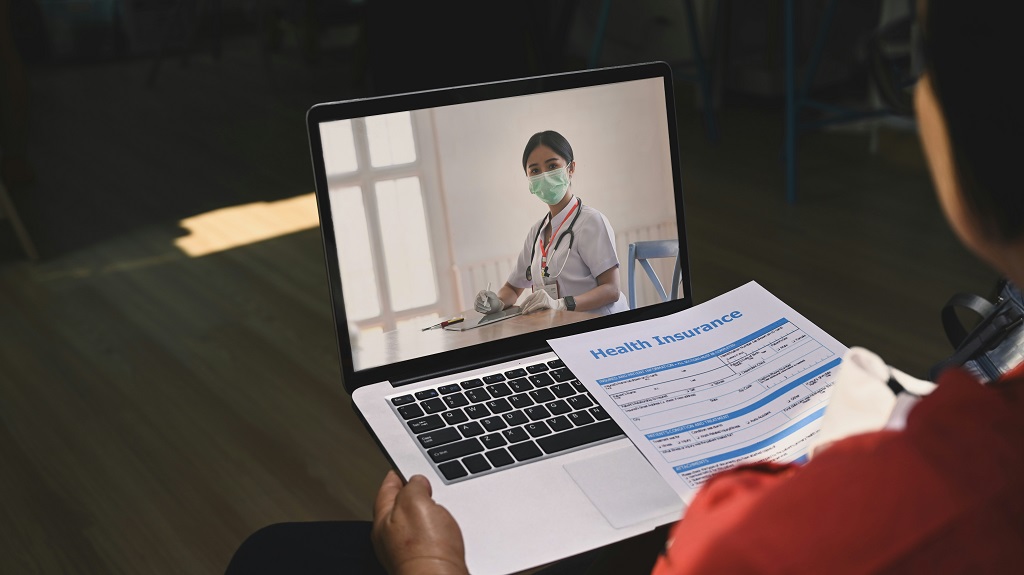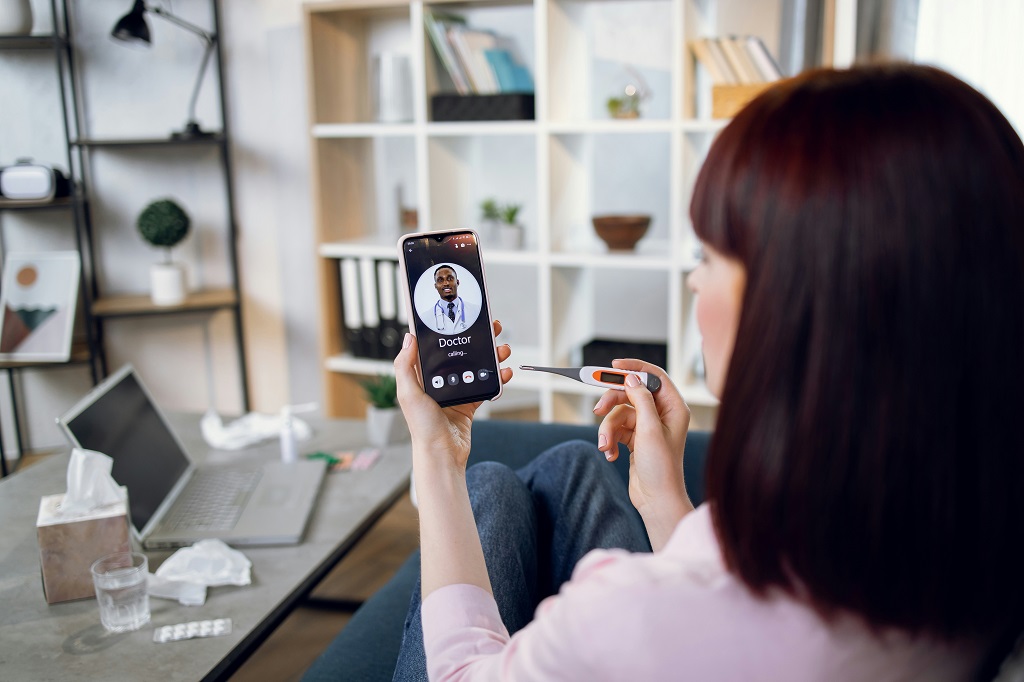
There was a moment when video calls in medicine were treated like a temporary workaround — something used only when travel wasn’t possible. That moment passed. Now many clinics rely on medical video conferencing the same way they rely on exam rooms and stethoscopes. It’s part of the daily workflow. A therapist checks in with a patient between sessions. A cardiologist reviews symptoms without asking someone to take two buses across town. A surgeon walks a family through recovery steps after discharge.
What changed is simple: people need clarity, timing, and presence. Being able to see the person you’re speaking with — their breathing, posture, hesitation, eye contact — changes how care is delivered. It makes advice easier to follow. It builds trust faster than phone calls or email threads ever could.
The screen isn’t a barrier. For many patients, it feels like the first time a doctor is truly “in the room” with them.
We’ll look at seven concrete ways this shift improves treatment, communication, and outcomes — not in theory, but in daily medical reality.
Why Video Matters in Healthcare

Care depends on what a doctor can observe. Tone of voice, breathing rhythm, how a patient shifts when they sit or stand — these things rarely show up in text messages or clinic forms. That’s why video conferencing in healthcare has become central to treatment, not just a convenience.
A family doctor can guide a patient through wound cleaning step-by-step while watching how their hands move. A therapist can respond to subtle emotional cues instead of guessing from a typed message. A pediatrician can reassure parents in the moment, not after waiting days for an appointment. These interactions feel direct. They happen in real time. And they make care easier to follow.
In healthcare video conferencing, the ability to see each other restores communication that phone calls erase.
You’ll often see moments like:
- A patient explaining pain better once the doctor asks them to stand and move.
- A specialist catching early symptoms because they could see muscle tension.
- A patient opening up simply because they’re sitting in their own home, not a clinic hallway.
These exchanges improve decisions. They speed treatment adjustments. They help people feel understood.
7 Benefits of Medical Video Conferencing

Before this technology became routine, a lot of care depended on physical presence. If you couldn’t get to the clinic, treatment usually had to wait. With medical video conferencing, doctors can meet patients where they are — at home, at work, or somewhere in between. Care doesn’t pause because of distance, weather, or a packed schedule. It keeps moving.
This is where the real advantages show up in everyday medical work.
Faster Access to Care
A clinic can only see so many people in person each day. Sign-ups pile up. Travel gets in the way. Some patients wait weeks for something that only requires a conversation and a visual check. With medical video conferencing, wait times shrink. Doctors schedule short check-ins, urgent advisory calls, or quick reassessments between clinic hours. Rural patients, elderly patients, and people without reliable transportation feel this difference the most. Care starts earlier. Issues are caught sooner. Treatment plans move forward instead of stalling.
Better Follow-Up and Chronic Condition Monitoring
Chronic conditions don’t resolve after one visit — they require ongoing adjustments. Diabetes management, asthma treatment, physical therapy exercises, recovery after surgery — these all rely on consistency. Medical video conference follow-ups make this realistic. A patient performs their exercises on camera. A doctor checks progress and makes changes in real time. Small corrections happen before problems grow larger. Patients don’t drop off simply because traveling is tiring. The care stays in motion.
Reduced Stress for Patients
Not every patient enters a clinic feeling calm. Hospitals are loud. Waiting rooms create pressure. Some people struggle to explain symptoms when they feel observed. At home, things shift. Conversations feel more natural. Patients take their time. This matters in mental health care especially. When comfort rises, honesty follows — which leads to better decisions and better outcomes. This is one of the quiet benefits of video conferencing in healthcare: patients finally speak the way they actually feel.
Collaboration Between Clinics and Specialists
Healthcare often requires more than one opinion. A general practitioner sees the initial symptoms, but a neurologist, cardiologist, or dermatologist may need to weigh in. In-person collaboration isn’t always practical. Video conferencing in healthcare lets multiple professionals review scans, lab results, and patient observations together — quickly. A screen share replaces the long wait between referrals. Doctors speak directly to each other and the patient at the same time. Decisions come faster. Treatment paths feel clear instead of uncertain. Patients don’t get lost between departments.
Lower Operational Costs
Every in-person appointment requires space, staff, and time. Some visits genuinely need that environment. Many don’t. When part of the workflow shifts to healthcare video conferencing, clinics free up rooms for patients who need physical exams. Scheduling becomes lighter. Staff hours stretch further. A clinic can support more patients without expanding its building or hiring another full-time coordinator. These small adjustments add up. It’s not just budget efficiency — it’s smoother operations day to day.
More Accurate Pre-Visit Screening
A form or phone call rarely tells the whole story. With video conferencing healthcare, doctors can watch how a patient walks, breathes, or reacts while describing pain. They can ask someone to demonstrate a movement, show a rash, or take a quick reading. These details influence what happens next: whether the patient needs an in-person visit, a test, or a simple at-home adjustment. The care pathway starts more accurately instead of relying on guesswork.
Continuity of Care During Emergencies
Life interrupts treatment — storms, travel constraints, mobility issues, caregiving responsibilities. Video conferencing uses allow care to continue even when getting to the clinic isn’t possible. A parent can speak to a pediatrician while tending to their child. A post-surgery patient can show healing progress without risking unnecessary travel. The treatment stays consistent, and trust stays intact.
How Communication Changes When Video Becomes Routine

When medical video conferencing becomes a normal part of care, the tone of appointments shifts. People speak differently when they feel seen. They explain symptoms more honestly when they’re sitting in a space they know, not under fluorescent lighting. There’s less pressure to perform “being a patient,” and more space for real conversation.
Doctors also gain small but meaningful details. A cardiologist might notice a patient leaning heavily on one arm while talking, the kind of quiet fatigue that doesn’t show up in charts. A therapist might catch a change in eye contact that signals stress rising. A pediatrician might see how a child interacts with a parent and understand the family dynamic better than any intake form could describe.
These small visual notes help shape treatment. They influence medication adjustments, recovery plans, and follow-up cadence. They make decisions clearer and more personal.
This is what changes when video becomes routine instead of occasional: communication feels direct. It moves at a steady pace. Both sides participate fully, and the treatment plan builds from a place of understanding rather than assumption.
Create a Secure, Branded Telemedicine System with Scrile Stream

There comes a point where clinics and medical networks outgrow generic video call apps. They begin with them — because it’s quick, familiar, and easy — but eventually the work demands more. Healthcare involves sensitive records, long-term treatment plans, and communication that must stay private. A clinic needs systems that match its workflow, not the other way around. That’s where Scrile Stream works well.
Scrile Stream is not an off-the-shelf platform. It’s a custom development service that builds telemedicine systems shaped around how a clinic operates. The clinic decides the structure, the branding, the interface, and the experience. Everything is configured to support medical conversations, record-keeping needs, and patient comfort.
What Scrile Stream can include:
- Private doctor–patient rooms for one-on-one consultations
- Built-in video and chat so conversations stay in one secure place
- Appointment scheduling that works with internal calendars
- Secure data storage and compliance-aligned access controls
- Billing and payment options: subscriptions, single consultations, ongoing care plans
This approach gives clinics control, instead of depending on third-party tools that change features or policies without notice. It also creates consistency — patients interact with one trusted environment every time, not a new app for each part of their care.
Why this matters for medical teams:
- Privacy is handled intentionally, not patched on.
- Records, notes, and follow-ups stay within one system.
- Branding reinforces trust and professional identity.
- The clinic owns its data and keeps full autonomy.
Scrile Stream provides the technical foundation so medical professionals can focus on care, not software limitations.
Conclusion
Medical video conferencing didn’t replace traditional care. It simply expanded where care can happen. It makes follow-ups easier, keeps communication steady, and helps patients stay connected to treatment without disruption. Clinics gain flexibility. Patients gain access and clarity.
For medical teams who’ve reached the limits of generic tools and need something built for real healthcare work, Scrile Stream offers a way to create a secure, branded telemedicine system that fits your practice instead of forcing you to adapt to someone else’s software.

